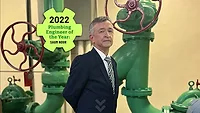2022 plumbing industry forecast
Market predictions and expected trends for the year ahead.
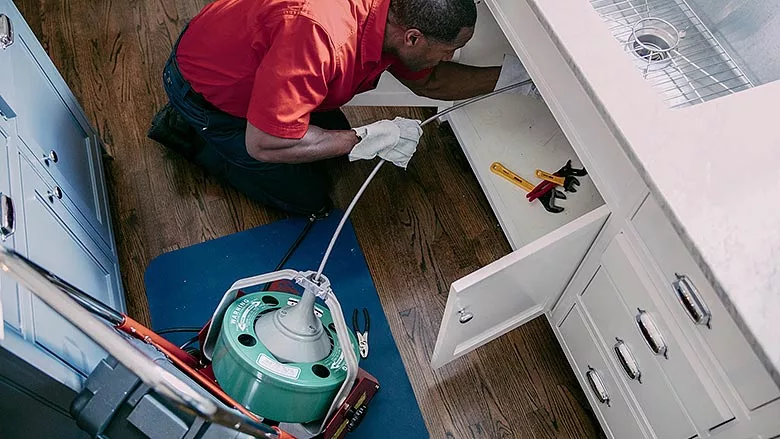
Doyle James, president of Mr. Rooter Plumbing, a Neighborly company, expects the residential repair, replacement and enhancement portion of the plumbing industry to continue to stay strong into 2022.
After the past two years, the entire world — plumbing industry included — is waiting for things to return to normal. This past year gave us some normalcy with a return of in-person meetings and events; however, with this latest spike in COVID-19 cases and the continuing supply chain issues and rising material costs, normal may be a bit further away than we hope. Nevertheless, PHVAC industry experts are cautiously optimistic about new opportunities available in 2022.
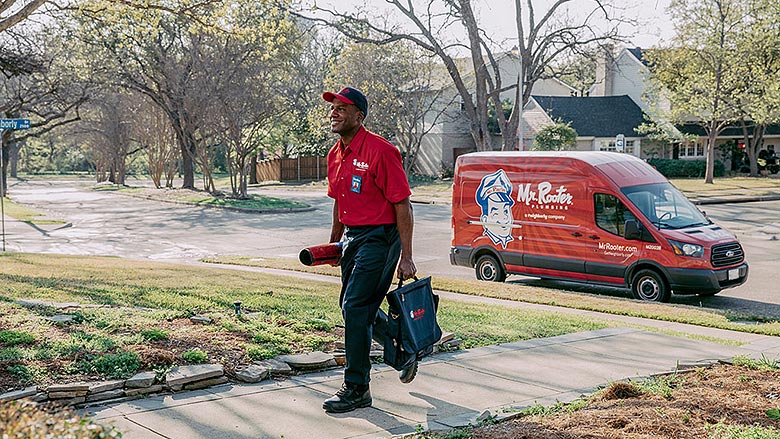
“We expect the residential repair, replacement and enhancement portion of the plumbing industry to continue to stay strong into 2022,” says Doyle James, president of Mr. Rooter Plumbing, a Neighborly company. “The uncertain supply chain issues and increasing material costs, we believe, will continue to affect the nonessential business sector, which could create challenges for new construction and commercial work at this time.”
Kerry Stackpole, executive director and CEO, Plumbing Manufacturers International (PMI), expects commercial construction to rebound next year.
“Single-unit construction, multi-unit construction, ‘built-for-rent’ construction and residential remodeling posted double-digit percentage growth in 2021 while the commercial construction segment went through a recessionary phase, according to the PMI Market Outlook from Plumbing Manufacturers International, a report we provide as a benefit to our members,” Stackpole says. “In 2022, commercial construction is expected to rebound as the residential segments cool from their hot pace but still experience moderate growth.”
Stackpole also notes that for the first time since 2013, the U.S. is seeing an equal number of single-family and multifamily units being built as buyers search for affordable housing options. Additionally, the typical size of a new home is trending back up because people are using their homes for more purposes, Stackpole adds.
“The uncertain supply chain issues and increasing material costs, we believe, will continue to affect the non-essential business sector, which could create challenges for new construction and commercial work at this time.” – DOYLE JAMES
“While lending conditions remain favorable for residential buyers, builders are reporting lot shortages, higher regulatory costs and materials and labor shortages, according to the NAHB,” he says. “On a positive note, the PMI Market Outlook shows a rising population consisting primarily of Gen X and Y (millennials) in their housing demand years; this demand is one factor that is keeping the housing markets growing despite the high prices.”
Matt Sigler, PMG executive director for the International Code Council (ICC) agrees that single-family and multifamily housing starts will continue to grow in 2022 due to the shortage of existing housing inventory.
“According to the U.S. Department of Housing and Urban Development and the U.S. Census Bureau, new home buying remains strong in Q4 of 2021, a strong indicator of the future growth within this market,” he says. “For the PMG industry, new home construction next year spells a good 2022 as it allows tradespeople to continue to capitalize on the need for work and product. Understanding this, manufacturers, trade associations and professionals in the PMG industry will be closely monitoring this market update.”
Brett Boyum, vice president of marketing and offerings for Uponor, also expects the housing deficit to continue to drive growth in both single-family and multifamily spaces. “Single-family residential demand, price growth and home resale velocity have hit historic highs. The repair, re-pipe and renovation markets are expected to continue to grow as homeowners are making the decision to stay in place and invest in their current properties. Data centers, warehouses and cold storage will also continue to perform well. We’re also seeing some hospitality projects start to move back on to bid boards which is a good sign for the market.”
“While lending conditions remain favorable for residential buyers, builders are reporting lot shortages, higher regulatory costs and materials and labor shortages, according to the NAHB.” – KERRY STACKPOLE
The pandemic has also effected the types of plumbing products desired in both residential and commercial spaces. According to IAPMO CEO Dave Viola, touchless products will continue to be top-of-mind in 2022.
“For the commercial market, touchless products/designs that work to mitigate the spread of pathogens — especially in public bathrooms — will be in demand for both new construction and remodeling,” Viola says. “In addition, smart technologies that provide real-time information to building owners and facility managers, such as leak detection systems, water quality monitoring systems and installed equipment performance monitoring, will also see an increase in demand.
“For the residential market, we expect that filtration devices that work to provide peace of mind to consumers regarding water quality, especially in light of all the media attention on PFAS “forever chemicals” and other industrial contaminants, should see an increase in sales and installations,” he adds. “Touchless plumbing products, smart building system technologies, and filtration products and systems should see significant growth in 2022.”
Frank Windsor, president of Rinnai America Corp., says he expects to see continued growth for the company in 2022. “We have strong partnerships in the residential new construction segment that drives significant volume. We have also expanded our commercial product, which will help us serve the commercial segment as it continues to recover from the pandemic. Lastly, we expect our residential repair and replacement business to continue growing as we expand our network of trained contractors and plumbers in the market.”
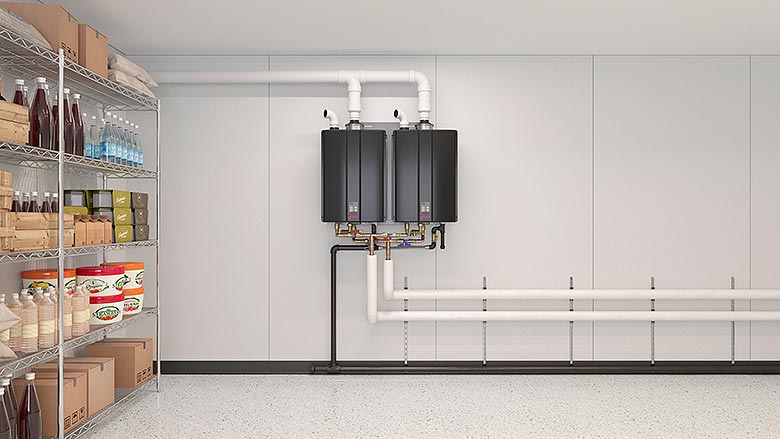
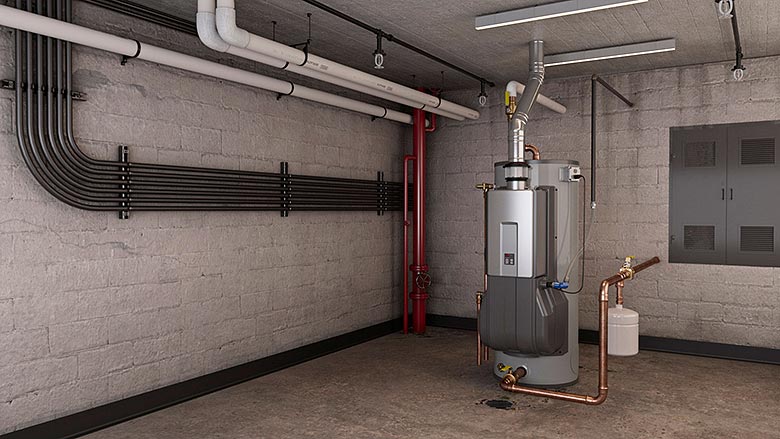
Quick, simple replacement
Rinnai’s Demand Duo R series combines a storage tank with tankless technology, thereby providing a high volume of hot water and an extended product life cycle. “This product is particularly unique because it is able to connect to existing 6-inch B-vent, making it a smart and simple solution for emergency replacement,” Windsor says.
Market disruptors and challenges
According to James, the biggest market disruptor in the coming year is not what you would expect.
“The biggest disruptor comes in the form of a tightening labor force, driven by an aging set of skilled professionals heading into retirement and a societal change that has pulled people away from a career in the trades,” he notes. “I do believe that is changing. There is renewed interest in the workforce in general that has come out of the jobs that were viewed as essential workers through the pandemic. This can be accelerated by logical apprenticeship, journeyman and master licensing requirements, not ones based on an outdated or political model. There is a great career path to entering and growing with the trades, we just need state and local regulations to support and promote the right level of regulation.
Windsor also cites the skilled labor shortage as the biggest challenge the industry faces in the coming year.
“We hear this from our pro network consistently,” he says. “When there is a labor shortage, not only is it challenging for them to serve their customers, but it is also difficult to find focused time to learn about new products and technologies. To assist with this challenge, Rinnai has expanded its training opportunities for contractors to include webinars, e-learning and live training events to ensure we maximize the number of Rinnai-trained plumbers in the market.”
“After all, there is a rising popularity in plumbing and heating products that are perceived to help protect against the virus such as touchless plumbing fixtures, smart technology integrated appliances, bottle filling stations and HEPA filtration systems for viruses, and demand will only continue to increase.” – MATT SIGLER
Sigler notes that the COVID-19 pandemic has been — and will continue to be — the biggest market disrupter and forcing the industry to adapt in many ways.
“For example, organizations such as ICC and the National Environmental Health Association (NEHA) are joining forces to develop new resources to help industry professionals adapt to the new conditions and to keep communities everywhere healthy and safe,” he explains. “After all, there is a rising popularity in plumbing and heating products that are perceived to help protect against the virus such as touchless plumbing fixtures, smart technology integrated appliances, bottle filling stations and HEPA filtration systems for viruses, and demand will only continue to increase.”
Another market disruptor Boyum predicts for 2022 is the decarbonization and electrification of the industry. “This is being talked about extensively across our industry, especially within the engineering community and regulators. Using carbon free fuels is going to challenge everyone from the manufacturer of products all the way down to end-user expectations/preferences.”
Viola agrees, saying decarbonization — specifically the electrification of homes and buildings — will be a disrupter to the industry for the next 10 years.
“The rapid movement toward clean energy creates uncertainty for the fuel gas industry,” Viola explains. “Although electrification is getting a lot of attention, IAPMO feels that there will be opportunities for hydrogen to be used, especially within existing building gas infrastructure, as an economical and efficient means to decarbonize the existing building stock heating and cooling systems.”
“This is being talked about extensively across our industry, especially within the engineering community and regulators. Using carbonfree fuels is going to challenge everyone from the manufacturer of products all the way down to end-user expectations/preferences.” – BRETT BOYUM
Supply chain issues to continue
Stackpole cites PMI’s latest Market Outlook report when he says the main market disruptors in the plumbing and HVAC industries are the labor and supply chain issues leading to material shortages.
“The COVID-19 pandemic created a dynamic where workers began to withdraw from the labor force due to concerns about their safety and because they were receiving government aid during the pandemic,” he explains. “The vaccine resistance of some customers — and the refusal of some business patrons to wear masks — continues to create disincentives for workers to return safely to the workplace, according to a recent Reuters report. In addition, some vaccine resisters have decided to give up their employment rather than receive the vaccine. All of this adds up to fewer available workers.
“Some of the largest materials shortages include appliances, framing lumber, oriented strand board, plywood, windows and doors, copper wiring and plumbing fixtures and fittings, according to the NAHB,” he continues. “But it seems that virtually everything is harder or slower to come by these days. The prices of most building materials have significantly increased due to the high demand for them.”
Stackpole stresses that managing the supply chain is among the biggest challenges, “particularly the recalibration of supply chain sourcing, using both onshoring and offshoring.”
“You have to be prepared for anything,” he says. “For example, last winter in Texas, there was an unexpected freeze that caused pipes to freeze. It also shut down two petroleum plants — refineries that, as it turns out, produce 85% of all the plastic resin used in North America. For about a month or so, while those plants were out of service, plumbing manufacturers could not get plastic resin to mold the plastic parts that they use in their toilets and other products. So, they had to go elsewhere to find the resin they needed.
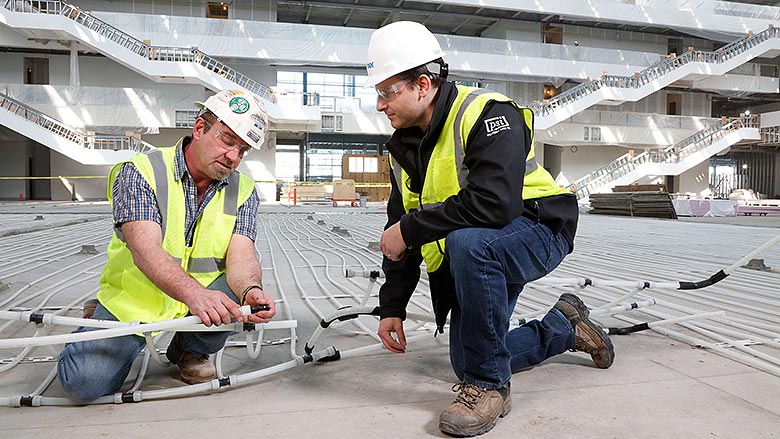
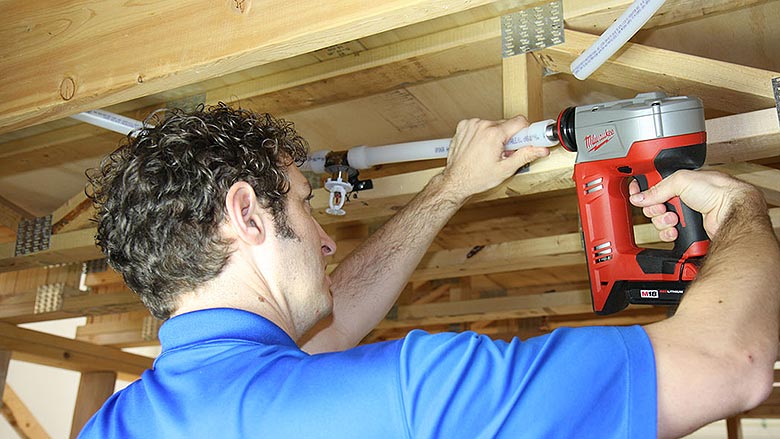
Creative problem solving
Boyum notes contractors can best prepare for the coming year by focusing on controlling costs and creative problem solving. “The companies that are able to outperform their peers in these categories by delivering on their customers’ needs and solidifying their relationship in a market with increasing costs and unstable supply chains will see the most success in the coming year.”
“All the different companies that rely on international trade to stock their shelves and buy their products are buying stuff,” Stackpole continues. “We’re all competing with each other for what turns out to be a limited bandwidth in the supply chain, whether it’s containers, available cargo ships or truck drivers to move things off the port. The PMI Market Outlook does show that the rising cost of materials will begin to slow as the pandemic becomes better controlled and supply chains become more stable. But that’s going to take a while.”
Sigler explains that, when combined with the continued rise in fuel prices, the industry can expect the cost of materials to increase in tandem. “Additionally, staffing shortages around the world are also playing a role in further contributing to delayed trade and shipments, further driving prices higher.”
According to Viola, all indications are that supply chain issues, material shortages and increasing costs will continue to be a major problem in 2022.
“The post-pandemic consumer demand has made supply chain problems much more apparent, of course, resulting from material shortages, staffing shortages, factory closures and a crippled freight system, putting a strain on the global economic recovery,” he says. “Some of these problems will be addressed in 2022, but it’s likely that some problems will persist throughout the year.”
Windsor agrees, saying rising costs and shipping delays are a challenge for most companies, and it will continue to be something Rinnai focuses on in 2022.
“We have several initiatives that will help us to combat these challenges,” he says. “First, we are in the process of completing the construction of a new 300,000-square-foot manufacturing facility in Griffin, Georgia, where we will begin producing our non-condensing tankless water heaters in 2022. This will help us maintain cost controls and minimize shipping issues. Second, we have formed a strategic sourcing team that is focused on building relationships with our suppliers and ensuring we are getting the best costs possible for materials and shipping.”
“The rapid movement toward clean energy creates uncertainty for the fuel gas industry. Although electrification is getting a lot of attention, IAPMO feels that there will be opportunities for hydrogen to be used, especially within existing building gas infrastructure.” – DAVE VIOLA
New products and technology to watch
The coming year will also bring growth opportunities in the form of adopting new products and technologies. According to James, water quality presents a great opportunity for plumbing contractors.
“Water filtration, purification, treatment and conservation is long overdue for attention by our industry,” he says. “In addition to some great new filtration systems, automated water shutoffs are a big need — especially after the experience of many Texans during the big freeze (and thaw) of 2021.”
Touchless technology and smart integration should be considered two of the most exciting areas poised for a breakout year in 2022, Sigler notes.
“Not only are these technologies more convenient for many consumers than traditional fixtures and appliances, but they are also thought to be helpful in decreasing the spread of diseases including COVID-19,” he says. “This makes them candidates for growth into the new year as the pandemic continues and homeowners upgrade their technology.”
Additionally, two other technologies to be on the lookout for, Sigler explains, are leak detection devices and electric vehicle (EV) charging units.
“Similar to touchless tech, leak detection technology allows homeowners to monitor their home from anywhere — adding convenience and peace of mind to their life,” he says. “In that same thread, EVs will continue to make their mark on the auto industry in the U.S., and as these cars take hold, more charging technology will be needed. The Code Council believes that EV charging is on the cusp of a major breakthrough for many communities across the country, and as such has released educational resources for local leaders to use as a guide to implementing this technology to help reduce their jurisdictions greenhouse gas emissions.”
Several years ago, connectivity and on-demand features were some of the biggest trends, Windsor points out. “While these continue to grow, we see more and more consumer demand for products that can intelligently learn their behaviors and adapt to their lifestyle. We expect this technology to continue to grow in 2022.”
The IoT and artificial intelligence have arrived in plumbing manufacturing, Stackpole notes, and we’re only on the cusp of how these technologies will be applied to plumbing products.
“As technology advances, more regulatory issues come into play,” he says. “For example, the Federal Communications Commission is reexamining its approach to the bandwidth that is provided to IoT devices — the ‘Hey, Alexa, turn on my shower’ kind of stuff. The spectrum used to enable these audio instructions is currently unlicensed. But it’s designed to stay out of the way of other licensed spectrums, such as walkie-talkies, police radio or radio signals for satellites. But they’ve now come back around and are contemplating whether the government should assess fees to manufacturers of these connected devices.
“These IoT technologies gather data, which creates consumer concerns about privacy,” Stackpole continues. “As a result, we’re seeing new privacy legislation being passed or introduced in various states, and even in China. Also, plumbing manufacturers are producing products involving the use of antimicrobials that may help to reduce the spread of infection; the use of these antimicrobials is regulated, just as a pesticide used in agriculture is.”
“While [connectivity and on-demand features] continue to grow, we see more and more consumer demand for products that can intelligently learn their behaviors and adapt to their lifestyle. We expect this technology to continue to grow in 2022.” – FRANK WINDSOR
Hopeful for 2022
“We’re looking forward to overcoming the COVID-19 pandemic, which will broaden the available workforce,” Stackpole says. “As always, we work with legislators and policymakers to achieve sensible regulation, such as with our work in California on the new lead-testing standard there. With the infrastructure package now through Congress and signed by President Joe Biden, there are funds that will help cities and towns across America to pull lead service lines out of the ground. That’s a huge win for families and children.”
Stackpole also notes educating the public on water efficiency will be important in coming years.
“As an industry, we believe that it’s important to take strides toward building a better public understanding of how water and energy efficiency, as well as the recycling and reuse of raw materials, intersect into a broader climate strategy for the world,” he says. “We hear a lot about electric vehicles, solar energy and reducing the use of fossil fuels in the media. What people need to know is that saving water and energy — and recycling and reuse — are all part of the same mindset, and they’re all part of the broader solution to solve the climate crisis.”
Viola says IAPMO is very much looking forward to returning to a greater sense of normalcy in how it conducts business. “IAPMO did well during the pandemic. We remained strong financially and utilized virtual methods of collaboration with our members, clients, contributors and partners with great success. However, as a membership organization built on relationships, mentoring and networking, we very much look forward to more in-person engagement in the coming year.
“As we look toward 2022 and beyond, plumbing and mechanical systems will become increasingly efficient, but also increasingly complex,” Viola adds. “The knowledge needed to properly install and maintain these systems is deepening. Engineering and contractor businesses will likely need to develop staff specialists to address those complexities. Training and credentialing programs will play a critical role in addressing those needs.”
Photos courtesy of Mr. Rooter Plumbing, Rinnai America Corp. and Uponor.
Looking for a reprint of this article?
From high-res PDFs to custom plaques, order your copy today!






